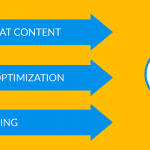
SEO Metrics That Matter: How to Measure Your Website’s Performance Effectively
In the vast and ever-evolving landscape of search engine optimization (SEO), measuring the performance of your website is crucial to understanding its impact and making informed decisions to improve its visibility and success. However, with a multitude of metrics available, it can be overwhelming to determine which ones truly matter and provide valuable insights.
To help you get started, we will explore essential SEO metrics that effectively measure your website’s performance, enabling you to gauge its effectiveness, identify areas for improvement, and achieve your optimization goals.
Table of Content
- 1 Organic Traffic: The Foundation of SEO Success
- 2 Keyword Rankings: Assessing Search Engine Visibility
- 3 Click-Through Rate (CTR): Maximizing Search Result Clicks
- 4 Bounce Rate: Engaging and Retaining Visitors
- 5 Conversion Rate: Turning Visitors into Customers
- 6 Backlinks: Establishing Authority and Relevance
- 7 Page Load Speed: Enhancing User Experience
- 8 Mobile Responsiveness: Catering to Mobile Users
- 9 Social Engagement: Amplifying Your Reach
- 10 Focus on Metrics That Matter For Better SEO Outcomes
Organic Traffic: The Foundation of SEO Success
Organic traffic is the lifeblood of your website, representing the number of visitors who arrive at your site through search engine results rather than paid advertising. Monitoring organic traffic provides a clear indication of your website’s visibility and its ability to attract relevant visitors.
Tools like Google Analytics offer comprehensive data on organic traffic, including the number of sessions, pageviews, and the average duration of visits. By tracking changes in organic traffic over time, you can assess the effectiveness of your SEO efforts and identify any fluctuations or trends that require attention.
Keyword Rankings: Assessing Search Engine Visibility
Keyword rankings are a fundamental measure of your website’s visibility in search engine results pages (SERPs). Monitoring your keyword rankings allows you to assess how well your website is optimized for specific search terms and how it compares to your competitors.
Tools like Google Search Console and third-party SEO software provide insights into your website’s keyword rankings, allowing you to track improvements, identify areas where you’re lagging behind, and make informed adjustments to your SEO strategy.
Click-Through Rate (CTR): Maximizing Search Result Clicks
The click-through rate (CTR) measures the percentage of search users who click on your website’s link in the search results after seeing it. A high CTR indicates that your website’s title tag and meta description are compelling and relevant to search users, enticing them to click through to your site.
By optimizing these elements and monitoring your CTR, you can identify opportunities to improve your website’s visibility and increase its clickability in search results. Tools like Google Search Console provide valuable CTR data, allowing you to evaluate the effectiveness of your search snippets and refine them for better performance.
Bounce Rate: Engaging and Retaining Visitors
The bounce rate measures the percentage of visitors who leave your website after viewing only one page. A high bounce rate indicates that visitors are not finding the information or experience they expected, resulting in a lack of engagement. By analyzing your website’s bounce rate, you can identify pages or sections that may need improvement or optimization.
Improving website navigation, enhancing content relevance, and optimizing page load times can help reduce bounce rates and increase visitor engagement, ultimately improving your website’s overall performance.
Conversion Rate: Turning Visitors into Customers
Conversion rate is a critical metric that measures the percentage of visitors who complete a desired action on your website, such as making a purchase, filling out a form, or subscribing to a newsletter. Monitoring your conversion rate provides insights into the effectiveness of your website in driving desired user actions.
By analyzing conversion rates, you can identify areas for improvement in your website’s design, user experience, and calls-to-action. Optimizing landing pages, simplifying checkout processes, and providing clear value propositions can help increase conversion rates and drive business growth.
Backlinks: Establishing Authority and Relevance
Backlinks are links from other websites that direct users to your website, indicating that your content is authoritative and relevant. Monitoring your backlink profile helps gauge your website’s authority and influence within your industry.
Tools like Ahrefs and Moz provide insights into your backlink profile, allowing you to analyze the quality and quantity of backlinks, identify potential link-building opportunities, and address any issues such as broken or toxic links. Building a strong backlink profile enhances your website’s credibility, improves search engine rankings, and drives organic traffic.
Page Load Speed: Enhancing User Experience
Page load speed is a crucial factor in user experience and SEO. In today’s fast-paced digital landscape, users expect websites to load quickly and provide a seamless browsing experience. Slow-loading pages not only frustrate users but also negatively impact your website’s search engine rankings.
Tools like Google PageSpeed Insights enable you to assess your website’s load speed and identify areas for improvement. Optimizing images, enabling browser caching, and reducing unnecessary scripts and plugins can significantly enhance your website’s load speed, ensuring a positive user experience and improved SEO performance.
Mobile Responsiveness: Catering to Mobile Users
With the rise of smartphones and mobile browsing, optimizing your website for mobile devices is crucial. Mobile responsiveness refers to how well your website adapts and functions on mobile screens. As mobile usage continues to dominate, search engines like Google prioritize mobile-friendly websites in their rankings.
Monitoring metrics related to mobile responsiveness, such as mobile traffic, the bounce rate on mobile devices, and mobile conversion rates, allows you to assess the effectiveness of your mobile optimization efforts. By ensuring seamless navigation, fast load times, and responsive design, you can provide an exceptional user experience for mobile users and improve your website’s overall performance.
Social Engagement: Amplifying Your Reach
In today’s interconnected digital world, social media plays a significant role in driving website traffic and amplifying your brand’s reach. Monitoring social engagement metrics, such as likes, shares, comments, and click-throughs from social platforms, provides insights into the effectiveness of your social media marketing efforts.
Engaging content, compelling visuals, and strategic use of social media platforms can help increase social engagement, drive traffic to your website, and expand your online presence. Integrating social sharing buttons on your website and analyzing the impact of social media referrals can also help gauge the influence of social platforms on your website’s performance.
Focus on Metrics That Matter For Better SEO Outcomes
Measuring your website’s performance through essential SEO metrics is key to optimizing its visibility, user experience, and business outcomes. By closely monitoring organic traffic, keyword rankings, click-through rates, bounce rates, conversion rates, backlinks, and page load speed, you can gain valuable insights into your website’s strengths and weaknesses. If you have local business than read about local seo checklist.
Armed with this information, you can refine your SEO strategy, make data-driven decisions, and continuously improve your website’s performance to achieve your optimization goals.
Remember, effective measurement and analysis of these metrics are vital to staying ahead in the dynamic world of SEO. And for expert-driven support, there’s always SEO services Nashville to fall back on.


